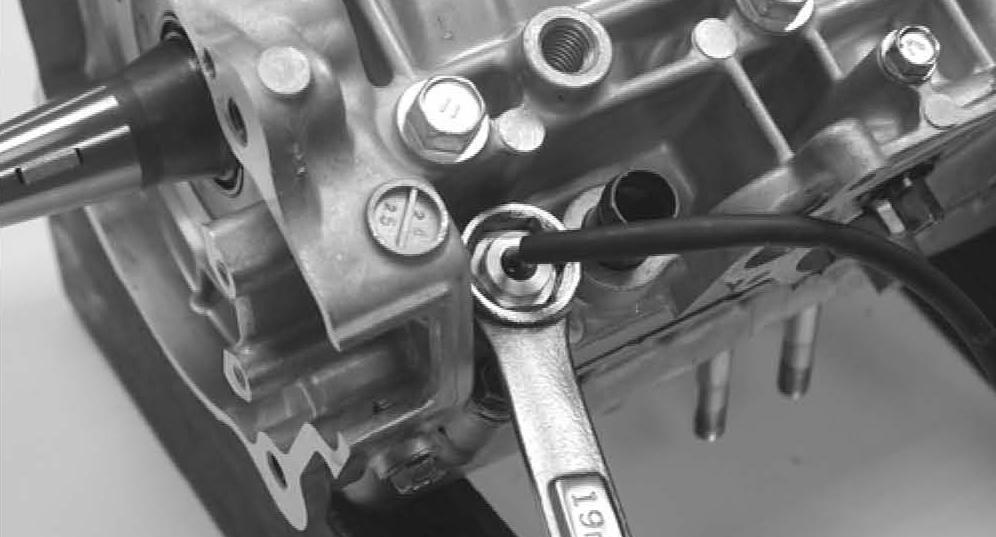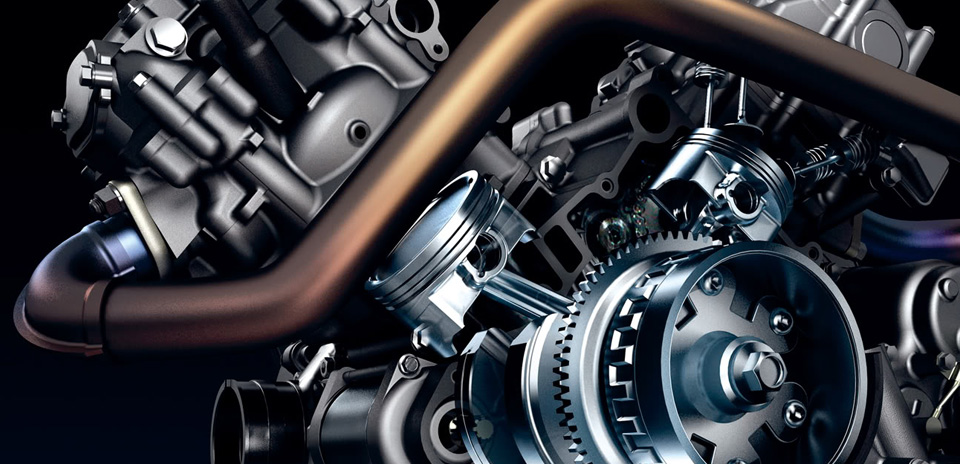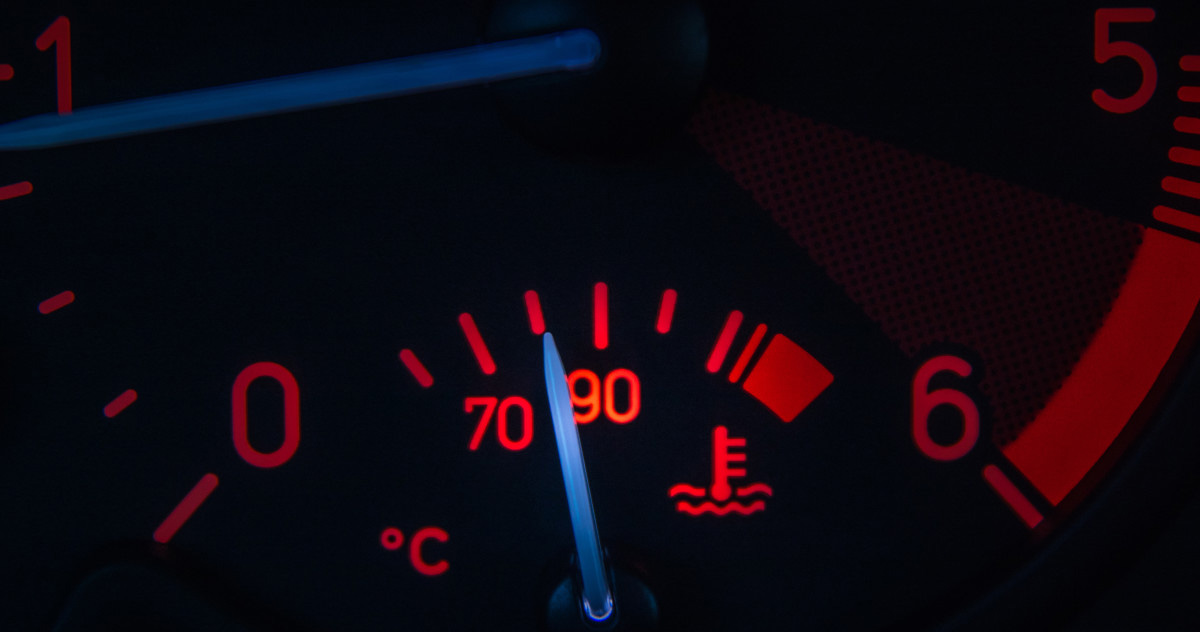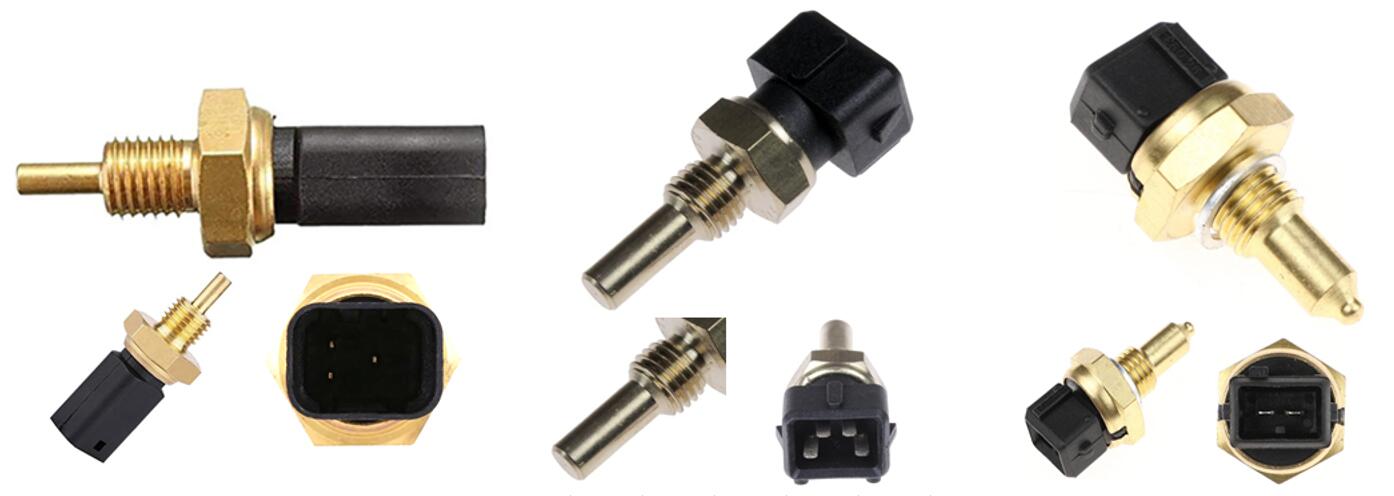
There are various sensors in the car engine. We know about the automobile's operating condition through the water temperature. The sensor converts the cooling water temperature into an electrical signal. The vehicle ECU receives the feedback signal (water temperature), analyses it, and issues commands (signals of the fuel injection and ignition timing correction).
1. Working principle
There is a semiconductor thermistor inside the water temperature sensor. The lower the temperature, the larger the resistance and vice versa. The sensor installs in the cylinder block or the water jacket of the cylinder head. It directly contacts the cooling water, which measures the temperature of the engine cooling water.
The electronic control unit gets the temperature signal from the sensor. The resistance is inversely proportional to the temperature. The ECU measures the temperature of the engine cooling water based on this variation. The computer can control the fuel injection and correct the ignition timing.
In other words, the water temperature of the engine indicates the condition of the car, no matter it stops or travels.
The instrument panel displays the water temperature. The common Volkswagen water temperature sensor is the four-wire type. Two wires lead to the ECU. The other two connect to the dashboard. There are two purposes. One is to facilitate the ECU signal acquisition. The other is to correctly display the water temperature on the dashboard, which allows us to grasp the value in time. We can determine whether the engine is working correctly.
Of course, in some exceptional cases, the ECU directly finishes the analog signal acquisition, then processes the original signal into the digital ones for the dashboard.
(1) Correct the quantity of the fuel injection. Increase the volume when the temperature is low.
(2) Correct the ignition advance angle. Increase the angle when the temperature is low. To prevent detonation, the sensor delays the process when the temperature is high.
(3) Affect the idle speed control valve (attached to the throttle body). When the temperature is low, ECU controls the condition of the valve according to the sensing signal of the water temperature, which increases the rotational speed.
(4) Affect the exhaust gas recirculation (EGR) valve.
Strictly speaking, there are two types of water temperature sensors. Whichever one it is, it contains the thermistor inside. The resistance is between 275Ω and 6500Ω. The resistance is inversely proportional to the temperature.

About the first type, it is relatively simple. The resistance changes in different conditions. The current changes accordingly, which drives the water temperature gauge to display temperatures. This process shows you the engine's working temperature.
The second type almost has the same structure as the first one, but it provides an analog signal of temperature variation to the engine control unit. The supply voltage is 5V from the control unit. The signal returns to the control unit is a linear variation signal of 1.3V to 3.8V.
This signal tells the ECU what the current temperature is. So it is crucial for the ECU. The engine works in different ways at different operating temperatures.
Here is an example. At a temperature below 86 °C, the engine injects 10% more fuel than normal conditions, which is to warm up the machine quickly and to reduce low-temperature wear and tear on the engine.
After the temperature rises above 86 °C, The engine injects less fuel to protect the device. Not monitoring the temperature correctly delays the regular operation of the engine.
If the water temperature sensor is defective and gives the wrong signal to the engine control unit, for example, if it provides a low engine temperature signal when the car warms up, the engine injects more fuel. That's kind of excessive fuel consumption.
The short circuit in the water temperature sensor makes the gauge needle directly point to the highest position. The open-circuit makes the gauge needle not move at all. Contaminants in the sensor lead to inaccurate measurements.

If you want to test the failure, a simple way is to put the water temperature sensor into a heating cup (be careful not to submerge the plug part). Set the multimeter in the 'resistance' range to measure. When the temperature rises, the resistance should become smaller. If there is no change, the sensor has problems.
When the water temperature sensor is faulty, it often shows the temperature signal of the warm car during the cold start. The ECU can't receive a signal of the proper gas mixture. It inclines to supply the engine with a leaner gas mixture (This happens when the car is warm). So the vehicle is not easy to start.
In addition, fuel consumption increases sharply. The idle speed is unstable. The symptoms are similar to misfiring and off-ignition. The car is hard to accelerate. When stepping on the accelerator pedal, the speed doesn't go up. The muffler emits black smoke and makes noise. In this situation, you need to check whether the sensor plug connects appropriately. If necessary, replace the sensor to check if it works.

Water temperature gauge on the dashboard
The most obvious symptom is that the needle of the water temperature gauge doesn't move. Or it always points to the highest position. Therefore, when we find this phenomenon, it is likely that the sensor is faulty and needs replacement in time.
Hard to start / Unstable idle speed
When the water temperature sensor is faulty, the ECU naturally doesn't get the proper signal of the mixture. It can only provide the engine with a leaner mixture. Especially when the car is cold, it may be more challenging to start the engine.
Even if you manage to get the car start, the engine is lack of power and stability. The car may go into a stall abruptly while idling or driving.
Fuel consumption
It is essential to understand that the ECU corrects the fuel injection and ignition advance angle according to the electrical signal provided by the water temperature sensor. If the sensor fails, it impacts the control unit, which causes an increase in fuel consumption.
If you have more good suggestions, welcome to send message to: [email protected].
Delcoribo is a leading auto parts manufacturer and
supplier, providing high-quality and affordable
products to wholesalers around the world.
 Lauritz Carolsfeld
Lauritz Carolsfeld  July 14, 2022
July 14, 2022
